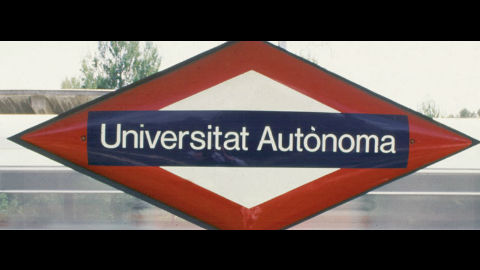Highest percentage ever of people using public transport to travel to and from the UAB

13/01/2020
The 2019 UAB Mobility Habits Survey – conducted every two years since 2001 with a sample of 4,241 individuals from a total of 38,433 people - reveals that public transport is the option preferred when travelling to and from the UAB, and has reached its highest figure since it was first analysed almost 20 years ago. Today, a total of 64.3% of the university community uses public transport: the option chosen most are the FGC trains (33.9%), followed by RENFE trains (19.4%) and buses (11.1%).
Since 2006 - in which 53.1% of members used public transport - there has been a constant increase in this travelling option. The use of FGC trains has remained constant throughout these almost two decades (between 32% and 36%), while figures have almost doubled for RENFE trains, from 11.6% in 2001 to 19.4% in 2019. One of the public means of transport that has risen the most when compared to the previous survey in 2017 is the interurban bus, rising from 8.6% to 11.1%.
The FGC chosen best option
According to users, the FGC are the bests means of transport (7.8) followed by the interurban bus (6.5) and RENFE (5.2) when valued on a scale of 0 to 10. A total of 29% of the university community uses private vehicles, and the remaining 6.7% of university members travels on foot or by bike.
Of those travelling in private vehicles, most of them use one car per person (19.1%), while only 8.4% share their car with others. Vehicle occupation rate is 1.3 persons to a vehicle. Of those using private vehicles to travel to and from the UAB, 47.1% use petrol cars and 41.2% use diesel cars, in inverted proportions when compared to 2017.
Less Car Owners and License Holders
Another data worth mentioning in terms of car usage is that 29% represents a clear decline from 2006, in which the figure was up to 41.1%. The percentage of license holders has also gone down gradually since 2009, in which 72.5% of university members had a driver's license in comparison to this year's 63%. At the same time, there's an important reduction in car ownership among undergraduate students: from 46.7% in 2009 to 34.6% in 2019.
Noteworthy Increase in the Use of T-Jove
The T-Jove card is the most frequent card used (65%) among those who chose to take public transport, followed by far by the T-10 card (17.4%). There has been a notable increase in the use of the T-Jove card in these past few years (from 10.3% in 2006 to 65% in 2019).
62.8% of the university community states that they would like to reach the UAB in a different means of transport than what they currently use. Among those interested in changing, the most frequent option mentioned is going from public to private transports. One of the main reasons for this change focuses on saving time and gaining comfort. Those interested in changing from private to public means of transport state economic reasons for wanting this change, followed by comfort.
Over a quarter (26.1%) of the UAB campus' university community lives in the city of Barcelona, followed by Cerdanyola (13%), Sabadell (8.9%) and Terrassa (6.3%).
The survey was answered by a sample of 4,241 people of a total of 38,433. This is the tenth edition of the survey, which is conducted by the UAB Mobility Planning and Management Unit, in collaboration with the UAB Research Group in Mobility, Transport and Territory (GEMOTT).
EXECUTIVE SUMMARY OF THE UAB MOBILITY HABITS SURVEY
https://www.uab.cat/doc/EHMCU_UAB_2019_cat
This information is related to the following SDG
Industry, innovation and infrastructure
Affordable and clean energy
Sustainable cities and communities